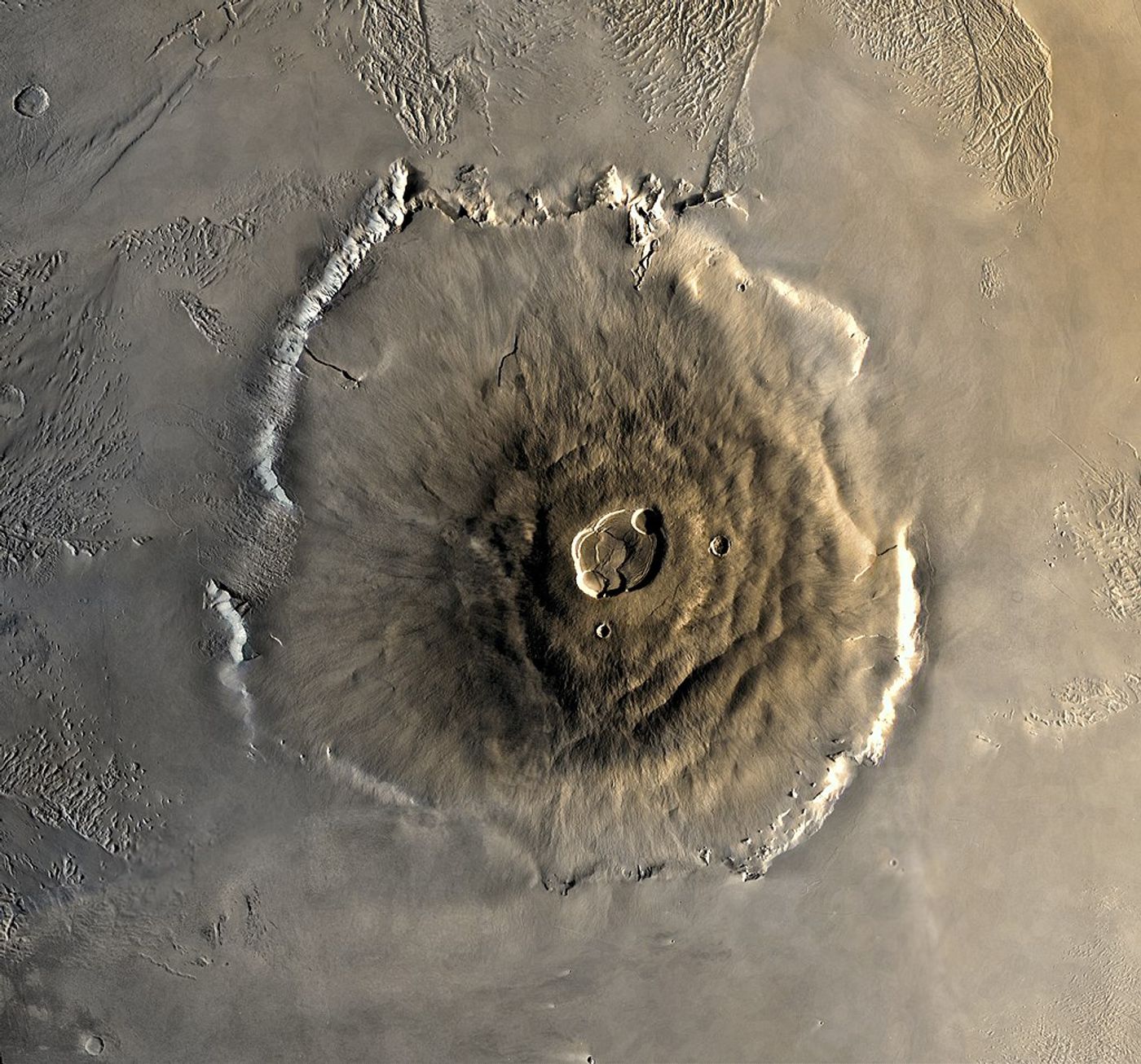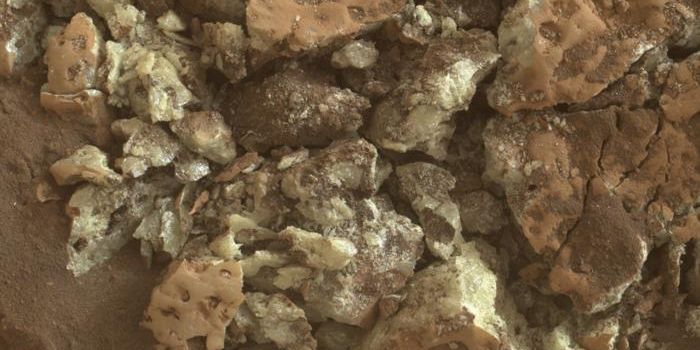Solar System Wonders: Olympus Mons on Mars
When we think of large mountains or volcanoes, we often think of Mount Everest, which holds the distinction as being the tallest mountain above sea level on Earth, measuring almost 5.5 miles (8.85 km) high. Since Mount Everest isn’t a volcano, that distinction belongs to Hawaii’s Mauna Loa, measuring 75 miles (120 km) wide and 5.6 miles (9 km) high. It is through the wonders of geology that we get to marvel at these mammoth-sized objects here on Earth.
But it’s also through the wonders of space exploration that we’re able to discover Earth isn’t the only planet with geologic marvels to witness. Our very own solar system bestows some of the most awe-inspiring geologic wonders we’ve ever seen, and this includes Olympus Mons on Mars, which is a shield volcano and holds the distinction of being the tallest planetary mountain and one of the largest volcanoes in the solar system.
Olympus Mons dwarfs all of Earth’s mountains and volcanoes by large margins, measuring 435 miles (700 km) wide and 14 miles (22 km) high. For comparison, that’s about two and a half times as tall as Mount Everest, and it’s so tall that it sticks out of the Martian atmosphere. It can fit snugly inside the State of Arizona, and its caldera is approximately the size of the Phoenix Metropolitan Area.
Scientists postulate that Olympus Mons’ size is owed to not only Mars’ very active past volcanism, but primarily due to its weaker gravity, which is one-third that of Earth’s. This reduced gravity allows lava flows to travel farther, which leads to Olympus Mons being as wide and flat as it is. Also, unlike Earth, the plate tectonics on Mars aren’t nearly as active, meaning hotspots beneath the crust remain stationary instead of moving over long periods of time, with an example being the Hawaiian Islands.
Given its lack of impact craters, scientists also postulate that Olympus Mons is relatively young at approximately 25 million years old. However, older volcanism occurring at Olympus Mons could have been buried with more recent lava flows.
While no rovers or landers have visited Olympus Mons, it has been imaged extensively from orbiting satellites and even Earth, with the Italian astronomer Giovanni Schiaparelli having observed Mars and its surface features in the 19th century.
Will future astronauts ever climb Olympus Mons, and what will these up-close explorations further teach us about this massive volcano? Only time will tell, and this is why we science!
Sources: National Geographic, Statista, Britannica, Lowell Observatory, NASA, USRA, Space.com
As always, keep doing science & keep looking up!









